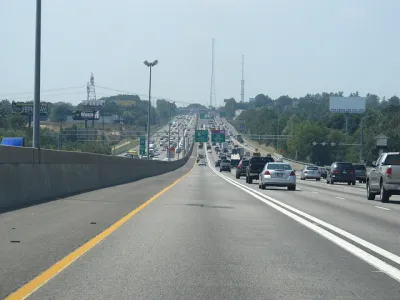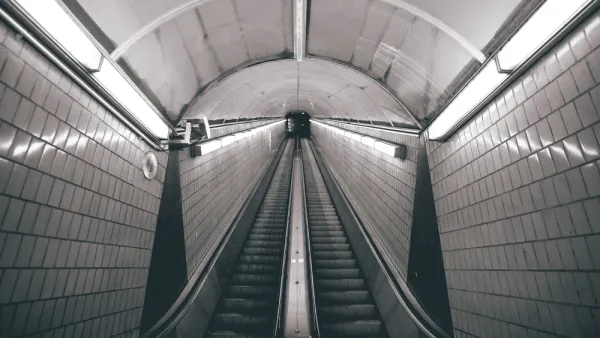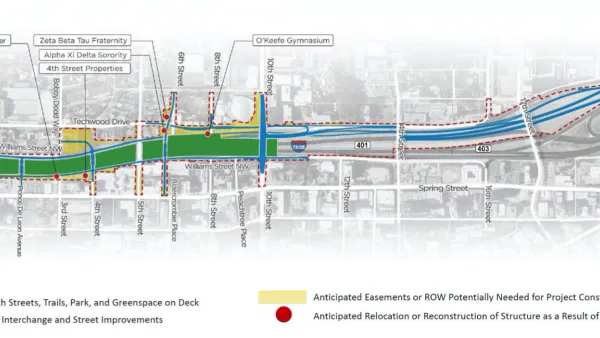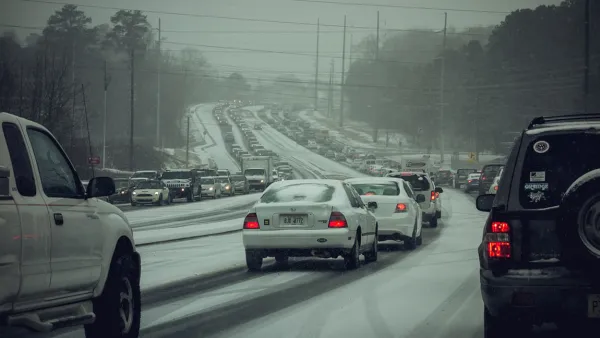The destruction of an expanse of I-85 in Atlanta means the heavily travelled freeway will be closed for months. The disaster that was predicted to follow, however, has so far failed to materialize.

Joe Cortright sets the scene:
It had all the trappings of a great disaster film: A spectacular blaze last week destroyed a several-hundred-foot-long section of Interstate 85 in Atlanta. In a city that consistently has some of the worst traffic congestion in the country, losing a key link in its freeway system could only mean one thing: Carmageddon.
But all hell did not break loose. In fact, writes Cortright, "predictions of terrible traffic in the wake of even major disruptions to the road system are almost never realized."
So why is that? According to Cortright:
Arguably, our mental model of traffic is just wrong. We tend to think of traffic volumes, and trip-making generally as inexorable forces of nature. The diurnal flow of 250,000 vehicles a day on an urban freeway like I-85 is just as regular and predictable as the tides. What this misses is that there’s a deep behavioral basis to travel. Human beings will shift their behavior in response to changing circumstances.
That argument is supported by one columnist's somewhat satirical approach to the days following the bridge collapse: George Mathis writes of the experience of being forced to take MARTA.
Cortright too makes one last appeal for the nation to keep a close eye on the experience of Atlanta as it goes about daily life without the use of I-85: "If the one of the nation’s most sprawling and traffic ridden cities can survive the loss of a freeway segment that carries a quarter million vehicles a day, it’s a strong sign that more modest changes to road systems really don’t have much impact on metropolitan prosperity."
FULL STORY: What Happened to Atlanta's Carmageddon?

Analysis: Cybertruck Fatality Rate Far Exceeds That of Ford Pinto
The Tesla Cybertruck was recalled seven times last year.

National Parks Layoffs Will Cause Communities to Lose Billions
Thousands of essential park workers were laid off this week, just before the busy spring break season.

Retro-silient?: America’s First “Eco-burb,” The Woodlands Turns 50
A master-planned community north of Houston offers lessons on green infrastructure and resilient design, but falls short of its founder’s lofty affordability and walkability goals.

Test News Post 1
This is a summary

Analysis: Cybertruck Fatality Rate Far Exceeds That of Ford Pinto
The Tesla Cybertruck was recalled seven times last year.

Test News Headline 46
Test for the image on the front page.
Urban Design for Planners 1: Software Tools
This six-course series explores essential urban design concepts using open source software and equips planners with the tools they need to participate fully in the urban design process.
Planning for Universal Design
Learn the tools for implementing Universal Design in planning regulations.
EMC Planning Group, Inc.
Planetizen
Planetizen
Mpact (formerly Rail~Volution)
Great Falls Development Authority, Inc.
HUDs Office of Policy Development and Research
NYU Wagner Graduate School of Public Service




























